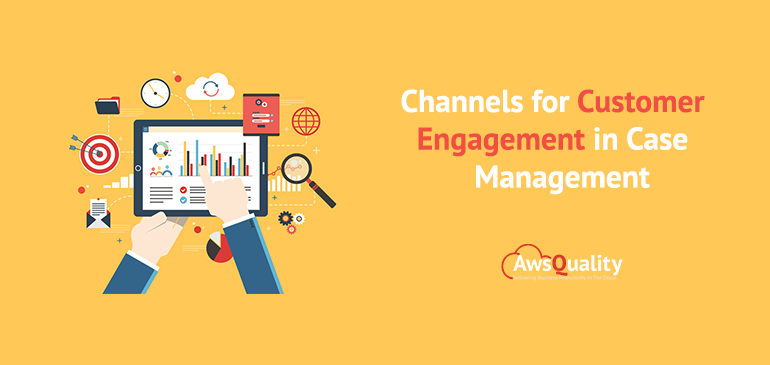
As stated in the Service Cloud, the first step is to deliver exceptional customer service by giving your customers the choice of how they interact with your company. The various ways your customers can contact your business are called networks, and they can connect to anything as changing as video conferencing in a mobile device, anything conventional like a phone number.
Why donate more than one line of contact to your customers? Imagine how many channels are on TV. Each channel offers viewers the shows they want to watch. Some viewers want to watch sports while other audiences want to watch soap operas. From time to time, you may find yourself filming different TV channels until you find a show that you want to watch based on your heart’s content. Now let’s say you have one TV channel. How would you feel? It might be outgoing or upset because you won’t have a choice.
With Service Cloud, you can give your customers more choices on how to reach your company – by phone, email, website, social media, online communities, and name it. First, we will set up the two most common channels, then we will explain to you some advanced channels that you can explore on your own.
Also Check: Salesforce Service Cloud Case Management
Add Web-to-Case
How many times have you gone to the Web to solve a problem? When was the last time you went to a company website to find out why your purchases didn’t work the way they should? Maybe later, right? Customers are expecting a Web presence. From the comfort of our homes or the synergy with our rubles, it is a given that you can get support online.
Web-to-Case is an easy way to do online support. In essence, it is a form of case law that clients complete and submits to agents. Web-to-Case helps your team collect service requests from your company’s website and automatically generate 5,000 new events a day.
- Enter Web-to-Case in the Quick Find box from Setup then select Web-to-Case.
- Click Enable Web-to-Case.
- Deselect Require reCAPTCHA Verification. We’re not going to cover reCAPTCHA here.
- Choose a default case origin, such as the Web.
- Select a response template that will notify customers automatically that their case has been created. Remember, great service is to let customers know their voice is heard! To see how this works pick any template.
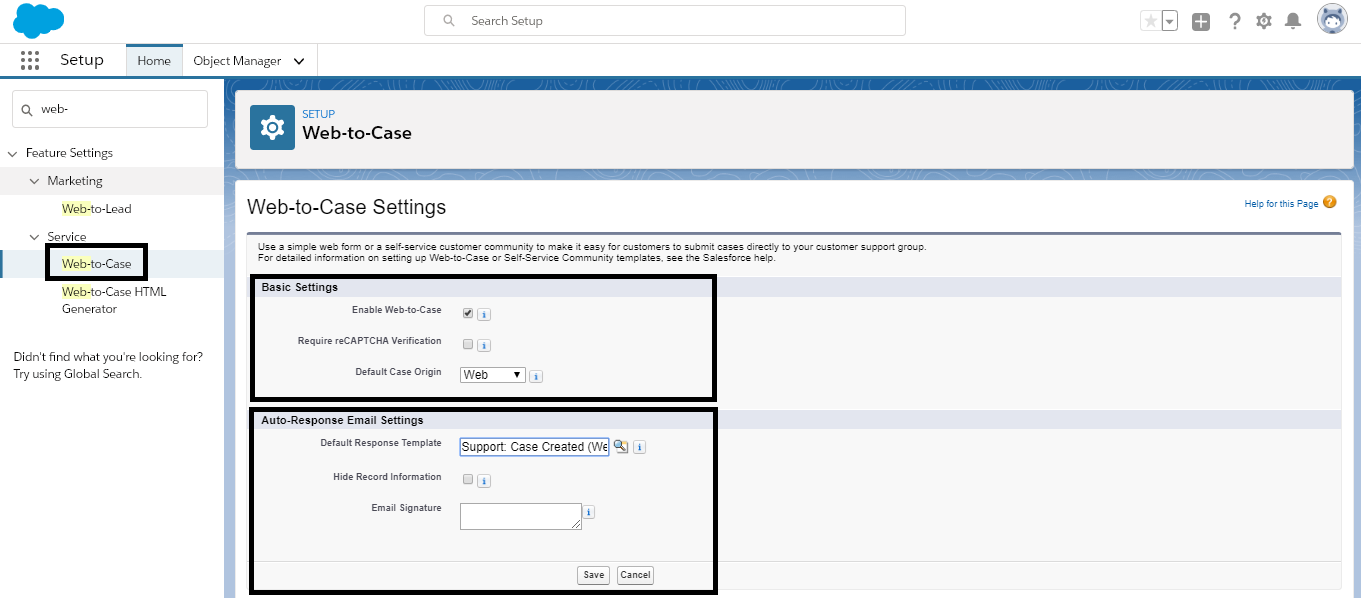
- To prevent case information from appearing in the email sent to customers, click Hide Record Information — this is only in the unlikely event a case fails to create.
- If you’d like to use an email signature that’s different than the one in the response template, enter a new signature.
- Click Save.
- You are now ready to generate the HTML form that will be sent to your web developer.
- Enter Web-to-Case HTML Generator in the Quick Find box from Setup then select Web-to-Case HTML Generator.
- On the form, fill in the case fields you want.
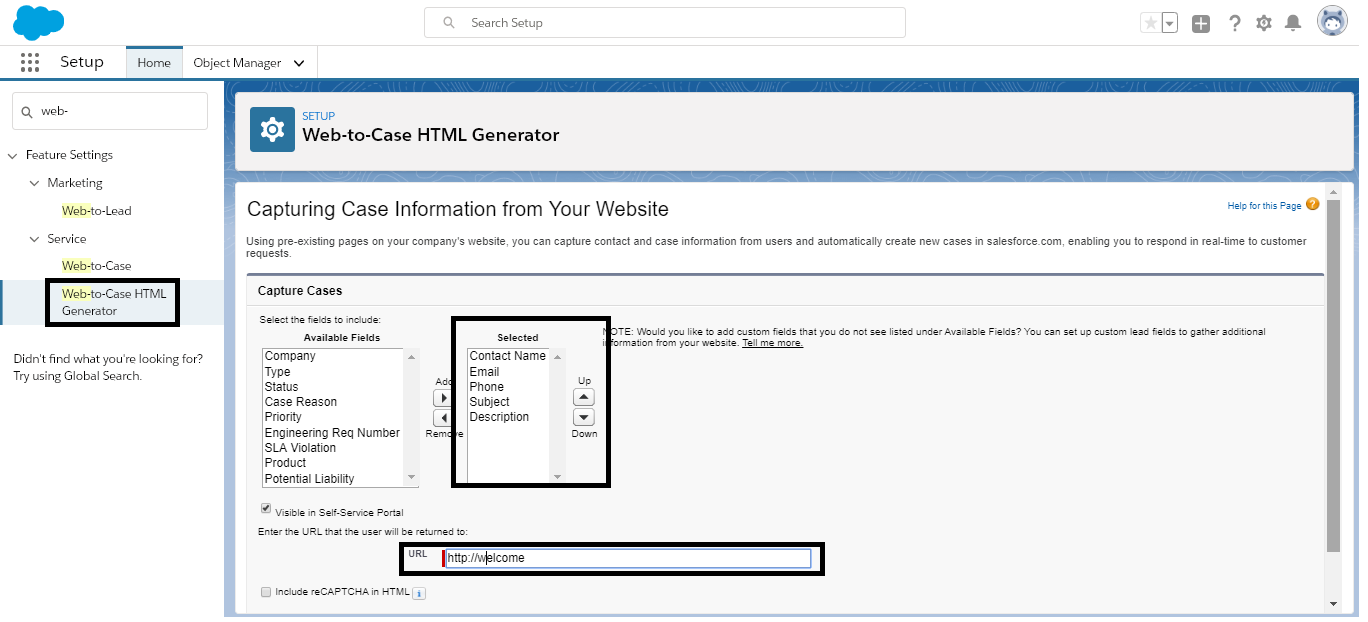
- Enter the URL that will appear after customers submit their case, such as a “thank you” page.
- If you pick Include reCAPTCHA in HTML, deselect it. We’re not going to cover reCAPTCHA here.
- Click Generate.
- Copy and send the HTML code to your web developer to post it on your website.
- Click Finished.
That’s all! Your online support presence has been suspended. Customers can reach out to your support team for their convenience and make cases through the Web.
Add Email-to-Case
How many emails do you read or every day? Like most people, you probably work and live around emails full of your inbox. You can probably access email on your mobile phone and expect to communicate with anyone in the world by clicking the Send button. Your customers are no different. They look forward to contacting your email support team. You can easily provide your customers with email support when setting up one of Salesforce’s email-to-Case options.
You can immediately set up Email-to-Case or On-Demand Email-to-Case. Both options automatically convert emails sent by customers to Salesforce cases. So what’s the difference between the two? Here is the answer:
Email-to-Case
- It saves all email routes within your network firewall.
- Receive email attachments larger than 25 MB
- It requires downloading and installing an email-to-Case agent on your network.
On-Demand Email-to-Case
- Sends all email availability outside of your network.
- Accept email attachments smaller than 25 MB.
- It uses Apex email services to turn mail into charges.
Email-to-Case.
In short, setting up an email-to-Case includes: (1) opening it; (2) adjust the settings and email address of your customers; (3) Ensuring that the address converts emails into cases; (4) adding an email address to your company’s website for customers to email your team.
- In the Quick Find, box enters Support Settings from Setup, then select Support Settings.
- Select Edit, and choose the default owner of the case and the automated user.
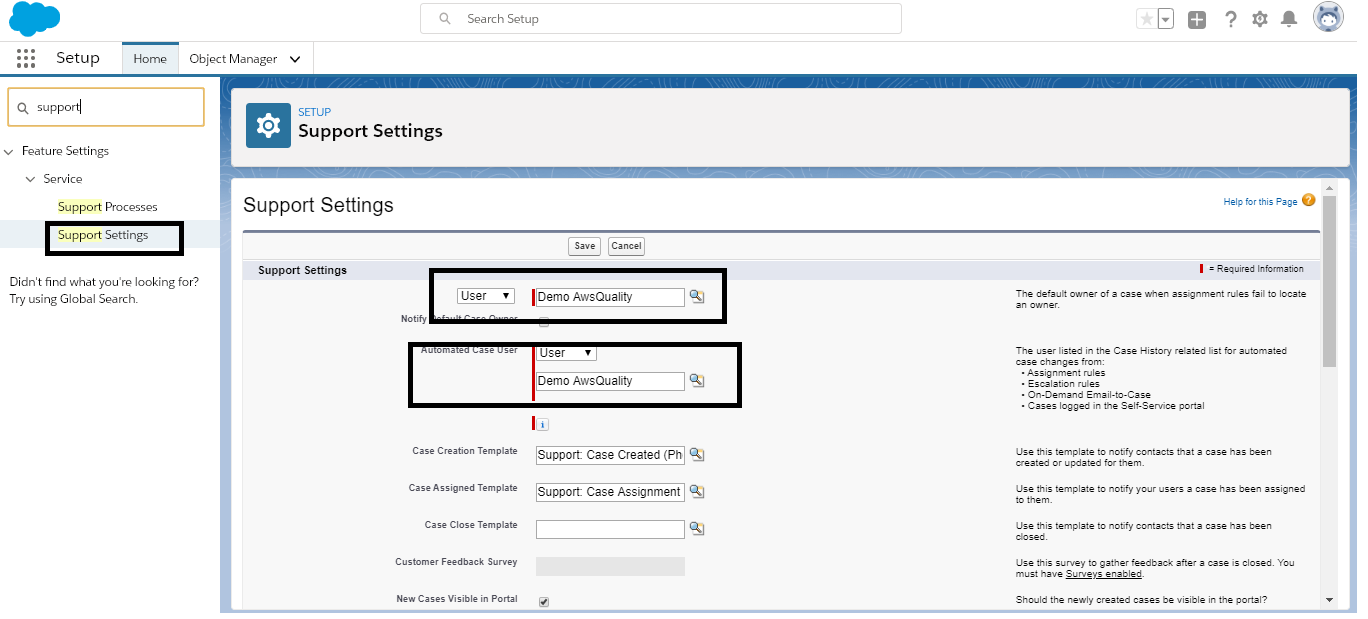
This ensures that each case that enters is assigned to an owner and not lost in a technical void. You can make a queue or a person out to the owner.
- Type Email-to-Case in Quick Find box, and select Email-to-Case.
- Press Edit, pick Enable Email-to-Case and Allow On-Demand Service, then press Save.
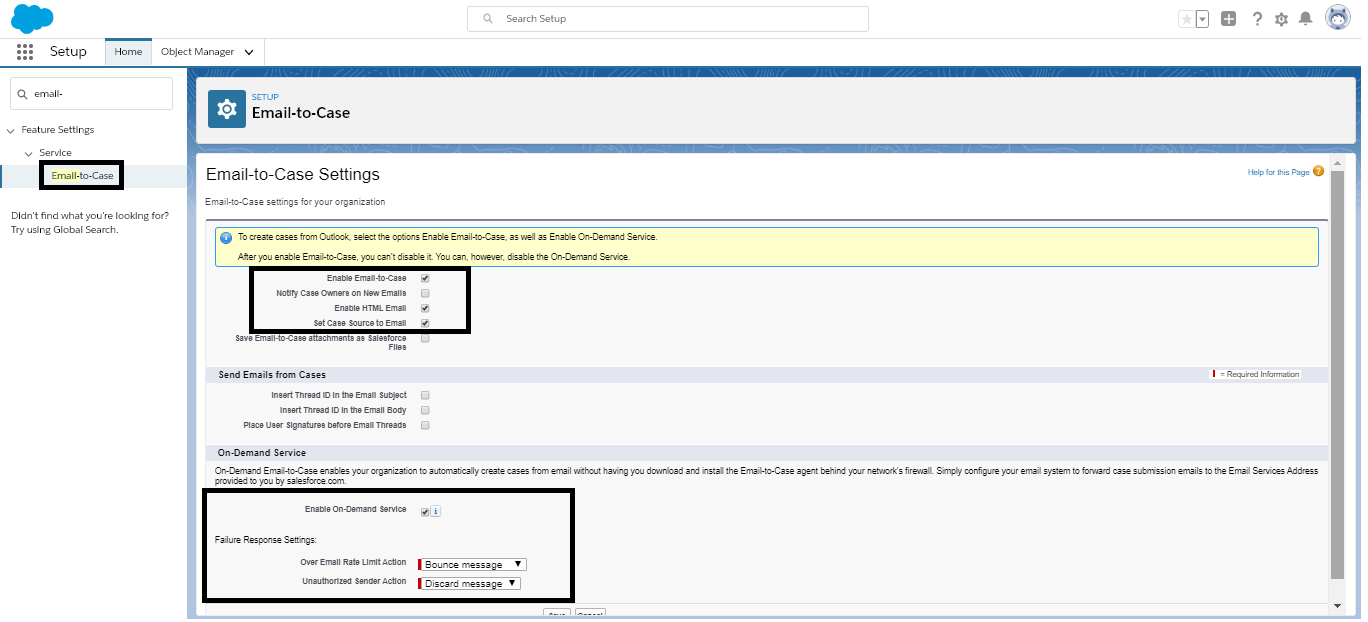
The other on-page settings decide how email content is processed.
- Select Email2Case next to the Routing Addresses, and select New.
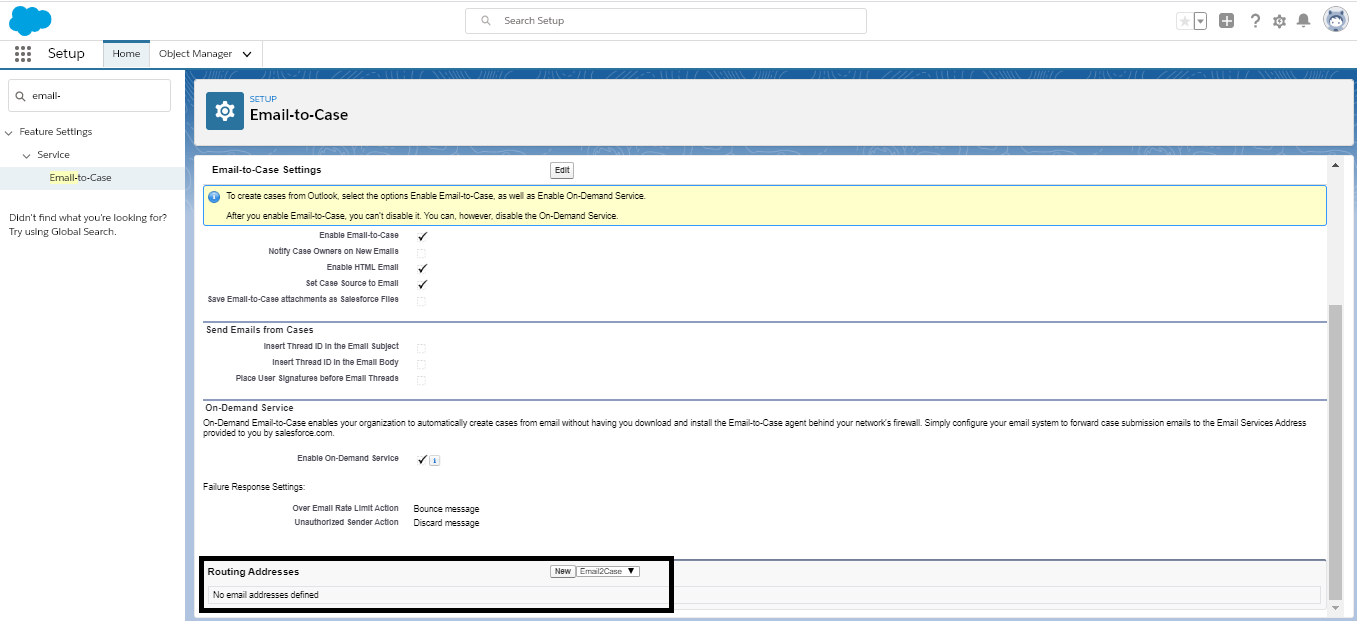
- Enter an email address that your customers can contact and send a name to your support team.
This is the address that will directly redirect emails to Salesforce, and turn them into cases.
- For cases converted from emails, select Priority and Origin, and press Save. Other settings are optional.
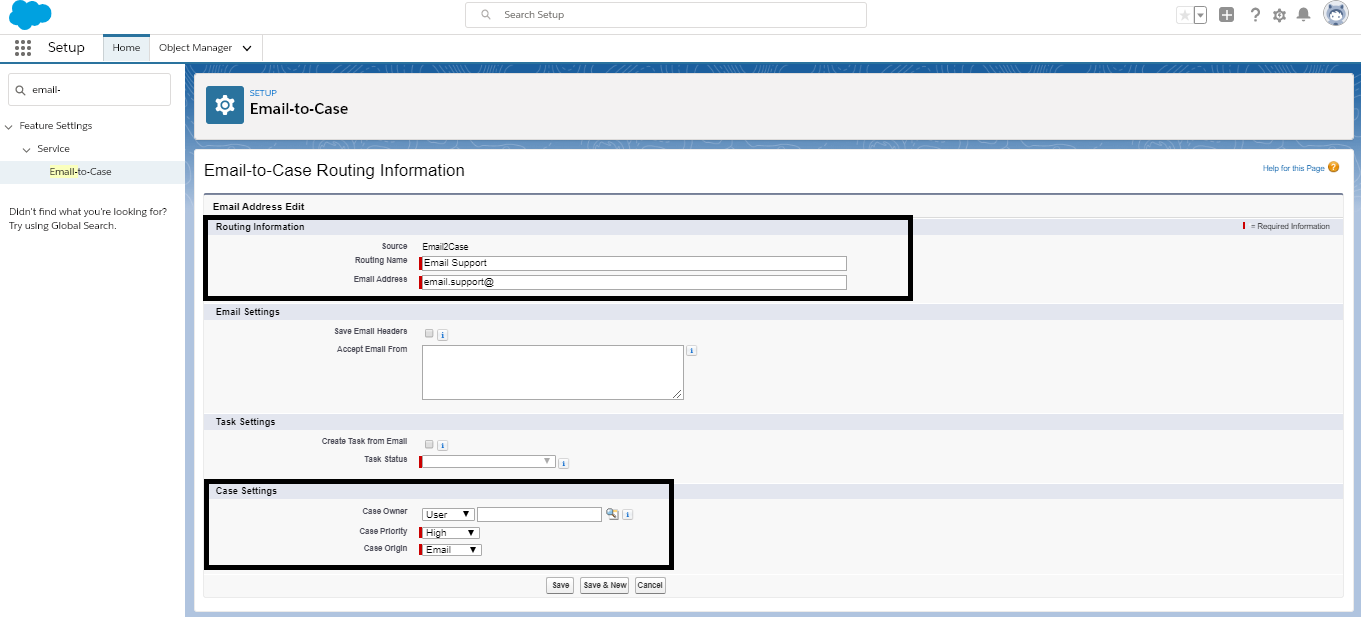
- Confirm your email routing address by testing a Salesforce verification email in its inbox. Or, On the Email-to-Case Routing Address page, click Verify next to the routing address.
- Click the link in the verification email, and Continue to confirm.
- Click Customize >> Cases >> Email-to-Case to return to the confirmed routing address.

Note that Salesforce generated an email for your routing address.
- Configure your email to forward messages to email services from your routing address.
- Test your routing address by sending it an email and checking to see whether the email converts to a case.
- Once you verify that emails sent to the routing address are converted to cases, you can send the address to your company’s Web developer to add to your site.
Now your service team has a great email channel.
Plan for Advanced Channels
Salesforce helps you create faster channels than Web and email. Since those channels are very popular with customers and service groups, we started with those first. But as you plan your support process, consider other channels that can make your customers happier. Also, look at the service options offered by your competitors. Does your team use the same channels available to your customers as your competitors? Maybe you can offer your customers better, faster service through advanced channels.
- Call Center: Some customers want to take their calls and talk to the agent immediately. Hearing someone’s voice and talking through difficult service situations is great support for some. With Callforce Call Center, you can turn calls into instances, and your agents can enter call details with just a few clicks. With each call, Salesforce unlocks important customer information on the screen so your agents know who they’re talking to and close the cases immediately. You can also aggregate data from third-party systems through phones to match your business needs.
- Chat: Imagine if your customers would click on a button on the website of your company to start a conversation with an agent. Think about how quickly your team will be able to answer customer questions with quick text chat. That is what Chat is capable of doing. Consider this channel as a way of improving first response times and raising consumer dissatisfaction about waiting for other channels to respond.
- Communities: What if your customers can answer each other’s questions? Think about how an online forum with your customer community can improve service times, raise awareness about unknown problems in your team, and build customer trust when your agents engage in online discussions. Salesforce communities are a channel that does all that and much more.
- SOS: The world is mobile and customers are turning to their mobile devices for support. Instead of providing your customers with mobile content, consider offering them an app channel with video conferencing, screen sharing, and targeted assistance. This is what the Service on Salesforce (SOS) is doing. Provide a channel that impresses your customers with cutting-edge technology.
Conclusion
With Service Cloud, you can give your customers more choices on how to reach your company – by phone, email, website, social media, online communities, and name it. So try to provide as many channels as possible to customers. For a better understanding of the channels or optimum utilization of the channels, you can contact us.
Get more information about Salesforce Integration




